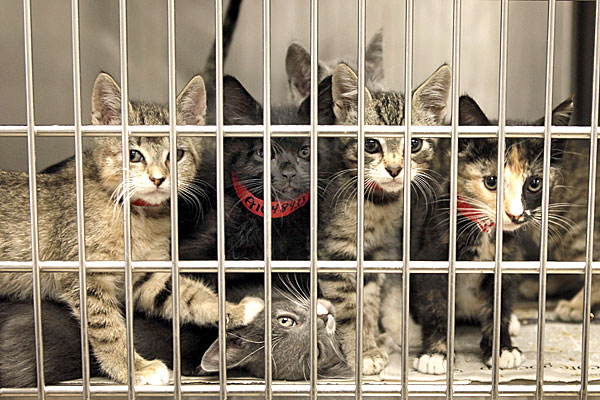In New York State, 71% of rescue groups have been turned away by at least one shelter, and that shelter then turned around and killed the very animals the group offered to save. This scenario happens roughly 70 times per day, every day, in NYS shelters. Today, the total number of animals killed who rescue groups were willing to save hit 20,000 since the ASPCA, Best Friends Animal Society, the Maddies Fund-funded Mayor’s Alliance, and their pro-killing allies succeeded in defeating Oreo’s Law last year. 20,000 animals who will never again sleep, or play, or bark, or meow, or purr, or love, or be loved because they are gone forever.
It is not easy to conceptualize 20,000 lost lives. Studies, in fact, show that when we see one animal or one person in need, we feel an incredible amount of empathy and pain. But as that number goes up, our empathy actually goes down. No one knows why. Perhaps it is our brain’s defense mechanism to allow us to cope with horror and still be able to go on about our daily lives. If we could actually feel the pain of a genocide in Darfur or the slaughter that goes on in shelters every day, the pain would be so great we’d be paralyzed by it. Perhaps it is because as the numbers go up, we no longer see names and faces but statistics. In other words, we do not see “Baby” or “Justice” or “Patrick,” but just numbers: 20,000. Perhaps it is because when the numbers are high, it becomes “common” and therefore less foreign; a case of custom reconciling us to what would otherwise be seen as an atrocity. As hard as it is to conceptualize, as hard as it is to feel the pain when the number is that high, we have to try. When we stop seeing it for the bloody, inexcusable, unforgivable horror that it is, we lose a bit of our humanity.
Each paw below represents one animal killed despite a rescue alternative in New York State. As you scroll through them, let your eye fall on each one. And as it does, imagine where that animal would be right now if Oreo’s Law had passed. The first one might be sleeping on a bed. The second one might be walking through the neighborhood. The third one might be playing with the fourth one in the park. The fifth one might be crouched low, ears back, ready to pounce on a leaf in a garden. The sixth one might be sitting by a window watching the rain. The seventh one might be stretched out on a swath of sunlight across the floor. They eighth one might be sitting at attention near the dining room table, hoping for a scrap. The ninth one might be retrieving a ball. The tenth one might be playing with a piece of string. And on and on and on 19,990 more times, until we reach the number killed to date despite a rescue alternative shelters simply refused to accept.
The animals aren’t doing those things because they are dead, their lifeless bodies rotting in a landfill somewhere. They aren’t, because though rescue groups were willing and able to save them, the shelter said “no.” They aren’t, because a law to force shelters to say “yes” was tabled thanks to opposition by the ASPCA, Best Friends, and the Maddie’s Fund-funded Mayor’s Alliance. They aren’t, because despite letters, e-mails, and telephone calls in support from thousands of animal lovers, three people with money and power said, “No”: Ed Sayres of the ASPCA, Jane Hoffman of the Mayor’s Alliance, and Gregory Castle of Best Friends.



